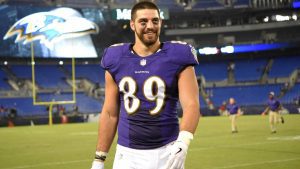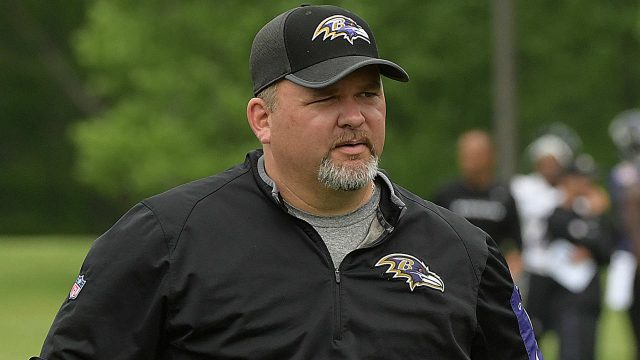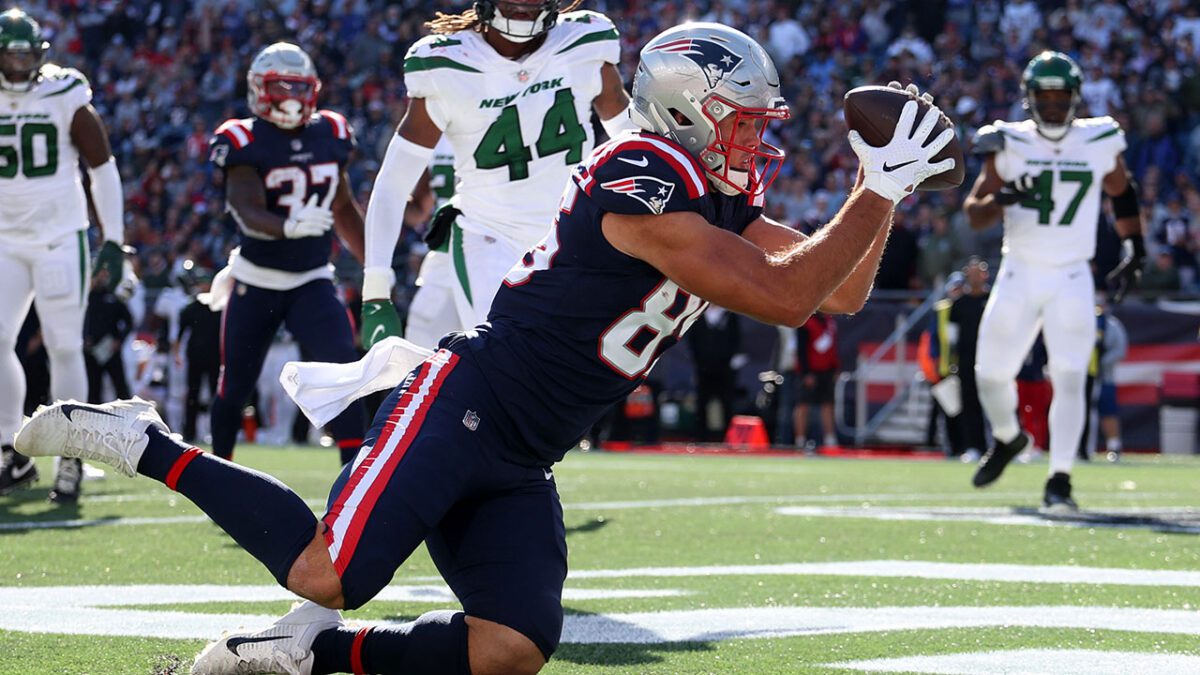The Path to a QB1: Lamar Jackson (#FantasyFootball)
The Path to a QB1: Lamar Jackson
2018 was a wild rookie season for Lamar Jackson, starting the season as a backup and gadget player. Sitting at 4-5 as the backup with an injury to Joe Flacco, Jackson finally got the opportunity to start and turned the season around. Jackson went 6-1 as the starter leading the Ravens to the playoffs. Although Jackson had a lot of success as a starter it came in ways that are unconventional to what we are used to at the quarterback position. Where we’re used to seeing quarterbacks light up the scoreboard throwing the ball all around, Jackson beat teams with his legs carrying the ball an unprecedented 147 times for a quarterback. Tallying up 695 yards on the ground Jackson led the NFL’s top rushing attack. The biggest fear the football community has with Jackson was his completion percentage for 58.2%
Coaching/ System change
The most significant change this offseason is the change in offensive coordinators. Out is Marty Mornhinweg in is Greg Roman. Mornhinweg ran an offense built for a traditional pocket passer in Joe Flacco that was solely based off of check downs and deep shots that force pass interference. This system clearly wasn’t workings with the Ravens sitting at 4-5 when Flacco got injured. When Jackson was brought into the game during this time he ran the zone read options and not much else.
The Trick plays were implemented in small doses but not practiced with for an entire game plan during the offseason. Once Jackson took over the Ravens offense wasn’t prepared on what to do and how to expand the play calling with a quarterback of that skill set. Believe it or not, he’s incredibly different from Flacco. As the season did progress Jackson was given more responsibility in the passing game but the offense isn’t built for him.
This is where Greg Roman steps in, the former run coach specialist was promoted to offensive coordinator with a proven track record with athletic quarterbacks. In his time in San Francisco and Buffalo, Roman worked with Colin Kaepernick, Alex Smith, and Tyrod Taylor, all of who can extend and make plays with their legs. While a quarterback’s ability to run is important to Roman’s offense it is not everything. The most carries any of his quarterbacks had was Taylor with 109 carries for 556 yards, both of which were less than Jacksons 146 carries for 695 yards last year. This is huge for Jackson’s health going forward keeping him from taking as many hits which is a legitimate fear with the volume of carries he had last year.
Another thing that’s a huge change is in college Jackson ran a pro-style offense with barely any option elements at Louisville. The majority of his rushing came off of scrambles and power run concepts, not the zone read. Both of which fit what Roman’s scheme revolves around. Roman puts Jackson in the best position to succeed as a quarterback and Jackson is the most naturally gifted QB, Roman has coached so the two should help each other thrive.
Surrounding Cast Change
What good is an improvement in the system if you don’t have the pieces to succeed in it? Last year’s offense for the Ravens was like the island of misfit toys. Michael Crabtree was on the wrong side of 30 and on the decline. This is made evident by him being in top three in the league in drops with 9 and lacking any route separation ranking 42nd in the league. John Brown also greatly underperformed as well similarly struggling with getting open ranking 72nd in the league in target separation. These types of performances are not conducive to a young quarterback’s growth and development. The name brand was there for them but the production didn’t match. Looking at NFL’s Next Gen stats Jackson was average or better in 8 of 12 zones. The most struggles came on the left side where Crabtree lined up.

At running back Baltimore had a rotation of Gus Edwards, Alex Collins, Ken Dixon, Buck Allen, and Ty Montgomery. This hodgepodge of running backs was second in the league in rushing yards and averaged 4.5 yards per carry. Yes, this group was incredibly effective but it lacked an elite every-down back who adds mystery to an offense.
The tight end group was the only part of the offense that was truly set with talent that kept showing up during the season. Especially in terms of fellow rookie Mark Andrews who had the third most receiving yards of any rookie tight end since 2011. Jackson completed 68% of his passes to his safety blanket but we all know that a young QB needs more weapons than just a few tight ends.
New GM Eric Decosta decided to dedicate this off-season in building an offense around Lamar Jackson. Between free agency and the draft, he retooled the entire offense with players that fit with Jackson mainly focusing on improving team speed.

The first major upgrade to the offense is the addition of Mark Ingram. Mark Ingram unlike every running back on the roster has the ability to stay on the field all three downs and can do more than almost all of them combined. Ingram is a power back who can run both inside and out as well as a proficient receiver out of the backfield. Ingram has proved he can be a thousand-yard rusher without being the focal point of the run game as well as catch 50 plus catches. A running back with his skill set opens things up for Jackson in a ton of ways as well as gives him a safety valve in the passing game minimizing risks.
To pair with Ingram the Ravens drafted a homerun threat out of the backfield in Justice Hill. The raw speed and explosive ability the Hill has paired in the backfield will keep defenses on their toes especially in the zone read situations opening up running lanes for Jackson. In the passing game, Hill can take screen passes and dump offs for huge chunk plays again giving Jackson an easy option in the passing game.
Love our content? Check out the GoingFor2 Live Podcast Network!
The most exciting part of Raven’s offensive reconstruction was the additions of Marquis “Hollywood” Brown and Miles Boykins. First-round pick Hollywood Brown is absolutely electric, he can score any time the ball touches his hands. Brown averaged over 18 yards per catch college career not only thriving on deep routes but adding an excellent run after the catch ability with 698 yards after the catch. Often compared to DeSean Jackson, Browns ability to take the top off the defense opens everything up on the offense forcing safeties back making life easier for the rest of his teammate. If teams do fail to account for Brown’s speed you might as well pencil six on the scoreboard.
The other receiver the Ravens added is Miles Boykin from Notre Dame. Boykin is an absolute athletic freak coming in with a Sparq-x score in the 94th percentile. As the perfect complement to an undersized Hollywood Brown. Boykin adds a 6’4” 220-pound frame to go with a blazing 4.42 forty and 43” vertical which is unreal for a guy that size. Boykin is a guy that Jackson can throw the ball up for him and go get it.
The three guys added via the draft, Brown, Boykin, and Hill added a ton of speed to the offense allowing for the Ravens to spread the offense and run more college based schemes that will fit closer to where Jackson excels.
What the improvements do for Jackson in the passing game
As mentioned before Jackson struggled with accuracy competing for just 58.2% of his passes. A lot of it, when broken down by zone, can be correlated with the talent on the team. His biggest struggles came on the outside on the 10-20 yard range on both the left (28.57%) and right (44.44%) hand side. These go right back to the point before that both outside receivers, Crabtree and Brown struggled to separate and with drops. While these windows are tough to hit being they’re smaller they also get even harder when guys aren’t getting open. Both receivers also struggled on contested catches both converting on under 30% of them. If you can’t get open and can’t win in contested ball situations you can’t succeed as a receiver and that will fall back on the quarterback’s efficiency.
 Jackson excelled throwing to the middle of the field which makes sense because that’s where his talented young tight ends are and his only starting receiver left on the roster plays (Willie Snead). In the 10-20 yard range, Jackson completed 61% of his passes and 0-10 yards he completed a fantastic 73%. Andrews was the main catalyst down the middle of the field. The big thing that shows up is his target separation where he ranked 9th in the league for tight ends, his drop rate was also in the top ten for best at the position. Who would think a receiving target who can get open and catch the ball would help a quarterback.
Jackson excelled throwing to the middle of the field which makes sense because that’s where his talented young tight ends are and his only starting receiver left on the roster plays (Willie Snead). In the 10-20 yard range, Jackson completed 61% of his passes and 0-10 yards he completed a fantastic 73%. Andrews was the main catalyst down the middle of the field. The big thing that shows up is his target separation where he ranked 9th in the league for tight ends, his drop rate was also in the top ten for best at the position. Who would think a receiving target who can get open and catch the ball would help a quarterback.
Brown and Boykin are automatic upgrades on the outside. Brown creates a ton of separation on his routes with his speed and technique will give Jackson easy targets that can hit with room to run. Another part of Brown’s game that is severely underrated is his ability to find holes in a zone during the QB scramble. Kyler Murray has a decent amount in common with his ability to extend the play with his athleticism and Brown did a great job working back to him and getting open. The ability to do this should translate extremely well for playing with Jackson.
If the additions of the two new receivers can get Jacksons’ completion percentages into the low to mid 60 percent range it would be huge for his overall output of production. As well as helping improve his accuracy it’ll help him make more plays downfield adding to his yards per attempt.
Rushing Projection
Last season Lamar Jackson set a dangerous precedent with his rushing attempts with 147 carries in 7 games. That pace would have put him at the top of the league for running backs let alone quarterbacks which isn’t healthy for a young QB. While it is one of the most intriguing parts of his game it does two things that are detrimental. The first is obvious and it’s putting Jackson as an injury risk. The second is when a team knows he is running that much they’re more prepared and it will affect his efficiency. The 4.7 yards per carry he had last year was not that great, the main reason it was as low as it was, was due to stacked boxes and teams playing the run at all times.
As mentioned before Greg Roman has had plenty of experience with running quarterbacks, coaching Alex Smith, Colin Kaepernick, and Tyrod Taylor, the most carries any of these quarterbacks had in a season was 104 for Tyrod Taylor who converted to 568 yards. Every season with these quarterbacks they all averaged between 5.5 and 6.5 yards per carry, which at minimum is almost a full yard better than Jackson. Roman should allow for Jackson to increase his efficiency ten folds without having the absurd volume of carries he had last year.
Jackson is one of the most dynamic athletes to ever set foot at the quarterback position and Roman is the perfect coach to maximize his ability to make plays with his legs without putting him at risk. Having Jackson carry the ball less with more creativity in the offense should improve upon his yards per carry that’ll keep his rushing production as an elite fantasy asset.
Projecting the 2019 season.
Last year production has to be taken with a grain of salt with Jackson on his usage due to the system and surrounding cast. Last year’s numbers at a 16 game pace would have put Jackson at 2546 yards and 13 passing touchdowns, plus an additional 1270 rushing yards and 9 rushing touchdowns.
Neither the passing side nor rushing side is sustainable on either end. A quarterback averaging 17 carries per game is absolutely insane and should be cut in half at a minimum. If that amount of carries truly is cut down to 8.5 carries per game that puts Jackson at 136 on the season which is still 32 more than any other Greg Roman quarterback. At 136 carries if Jackson averages the lowest of any Roman quarterback per carry at 5.5 YPC that puts him at 748 yards per game if he’s near the higher end its more towards the 900 range at 884.
Including the playoffs, Jackson was averaging 23.37 attempts per game as a starter and 58.9 completion percentage which is both on the low end for quarterbacks. With the improvements to the offense at receiver, offensive line and running back should easily help produce improvements in both. For the receivers, fewer drops and more target separation will be huge and with more talent there it should allow for the team to feel more comfortable passing.
Small improvements will go a long way in production. If Jackson is able to get his completion percentage up to 62% and has just 27 attempts per game that will put Jackson at 3067 yards passing this season. The other part of the passing attack worth mentioning is the new receivers run after catch ability that should improve his yards per attempt. Last year Jackson averaged 7.1 an attempt if he can improve it to match even Dak Prescott’s 7.4 we’re looking at 3196 passing yards. Combine this with his rushing Jackson should be in for a great 2019 season
On the touchdown front Jackson averaged a TD every 28.33 pass attempts which at the projected 432 attempts puts him at 15 TDs. With the improvements on offense, a jump to 17-19 is fully in reason with improved accuracy. On the interception front, he averaged a 2/1 TD to interception ratio. I increased that for this to 10 interceptions, due to more high risk throws. This is one number that could be volatile due to the offense although Tyrod Taylor under Greg Roman protected the ball well.
Rushing the ball Jackson had 5 touchdowns off 147 attempts. With this year’s projection of a decrease in carries, I’m going to keep him at 5 rushing TDs with around the same amount of carries total on the season as in the 7 games total last year.
| Projection | Pass Yards | Pass TD | Int | Ru Yards | Rush TD | Fantasy Pts |
| Low | 3067 | 17 | 10 | 748 | 5 | 275.3 |
| High | 3196 | 19 | 10 | 884 | 5 | 302.32 |
With this current projection in 2018, this places Jackson on the low end at QB15 and on the high end at QB9 making Jackson an extreme value at his ADP of QB20 in round 12. Even at a modest improvement, Jackson is a capable starter in fantasy with the upside to explode at any moment in the passing game. The realm of a fantasy QB1 is definitely a possibility for Jackson, he has the skillset and now the weapons to be a high impact player. The sky’s the limit for Jackson and the team putting everything in place around him proves they agree.
ATTN Dynasty Commissioners: Do you want to do something cool for your league? How about a 1-hour live show dedicated to YOUR league? Team-by-team breakdowns, rankings, and more. For details and to book a show, visit: GoingFor2.com/plp.







